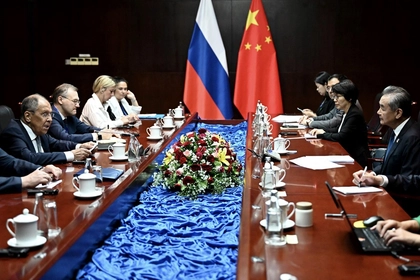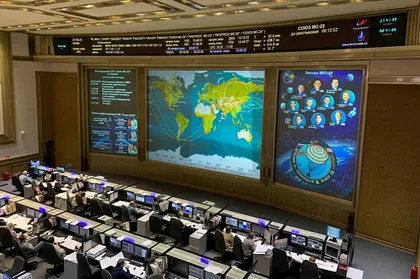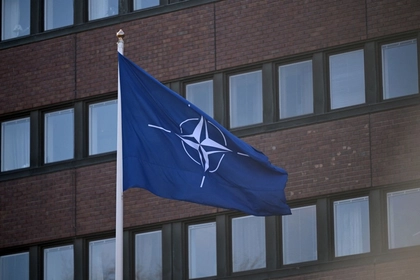Russian plans to deploy a new anti-satellite system in space — first revealed on Feb. 14 by House Intelligence Committee Chair Mike Turner (R-Ohio) and reiterated in another warning on Feb. 22 — sounds the alarm about Vladimir Putin’s preparations to detonate a nuclear weapon in space in violation of the 1967 Outer Space Treaty.
More importantly, U.S. officials are also concerned that Russia intends to deploy an exo-atmospheric missile interceptor, which is a dual-capable missile that can possess either a conventional/kinetic explosive or a nuclear warhead.
JOIN US ON TELEGRAM
Follow our coverage of the war on the @Kyivpost_official.
Today thousands of commercial satellites circle the Earth providing communications services to global consumers through everyday use of cell phones and GPS in low Earth orbit. These communication services also include American armed forces deployed around the globe operating above and below the sea.
By detonating a nuclear weapon in lower Earth orbit, Putin could asymmetrically nullify the US advantage in space by creating what is referred to as a High-Altitude Electromagnetic Pulse (HEMP) weapon.
According to a report on the threat of HEMP weapons, “a nuclear detonation at 30 kilometers altitude would generate a HEMP field with a radius on the ground of 600 kilometers, damaging all kinds of electronics, blacking out electrical grids and collapsing other life-sustaining critical infrastructure.” A similar combustion “at 400 kilometers altitude would extend the HEMP field to about 2,200 kilometers, large enough to cover most of North America.”

Russia, China FMs Meet as ASEAN Talks Get Underway in Laos
Despite Western sanctions, Russia continues to rank as one of the world’s top three space powers and has continued to make new investments and modernize its asymmetric military capabilities in space.
In 2021, the Kremlin successfully tested an anti-satellite missile and is replacing the older Soviet-era Topaz nuclear-powered satellite systems with a new generation of spacecraft as part of the Ekipazh research and development program. These new satellites are on the verge of being deployed and will have enhanced electronic warfare capabilities and the ability to jam US satellites.
One of the key lessons of the Ukraine war learned by the Russian military is that low Earth orbit is pivotal to modern-day warfare and an area where Russia is at a major military disadvantage. Nowhere has this been more evident than on the battlefields of Ukraine where SpaceX, Planet Labs and Maxar satellites have demonstrated US technological superiority offering Ukrainian military forces an edge over the Russian army in communications and reconnaissance.
Geopolitically speaking, Putin’s drive to dominate lower Earth’s orbit is nothing more than a bid to control the entry and exit points to space.
Astropolitik experts compare this concept to Halford Mackinder’s 1904 famous Heartland geopolitical theory: “Who rules East Europe commands the Heartland; who rules the Heartland commands the World-Island; who rules the World-Island commands the world.” Space strategist Everett Dolman revised this maxim to state: “He who controls low Earth orbit controls near-Earth space. Who dominates Terra determines the destiny of mankind.”
Given the strategic importance of low Earth orbit to modern-day warfare, everyday use of cell phones, and much of global commerce, what Putin is vying to accomplish is hardly surprising.
Should Russia detonate a nuclear weapon in space, the United States must realize that Putin’s end game is to pressure the U.S. back into strategic arms control talks and is doing so by utilizing the Russian strategy of “escalate to de-escalate” as part of his nuclear saber-rattling.
The Biden administration itself is to blame for this because last year national security advisor Jake Sullivan told Moscow that it was prepared to engage in future talks “without preconditions.” Putin so far has refused to accept their offer. Instead, he is pursuing a high-stakes game of nuclear blackmail to force new arms control discussions to demand that the U.S. end its military support for Ukraine.
To stop Putin’s pressure tactics in space, the United States should continue to ignore Russian efforts to coerce it into new negotiations aimed at ending support for Ukraine. The United States also should double down on its efforts to develop counter-satellite capabilities by increasing the sustainability and flexibility of its space-based assets. Finally, it must develop a long-term political and military strategy in space to resist Russian efforts to exert control over lower Earth’s new terrestrial heartland.
Glen E. Howard is the former president of The Jamestown Foundation and Pavel Luzin is a senior fellow.
This piece is reprinted from The Hill with the permission of the authors. See the original here.
The views expressed are the authors’ and not necessarily those of Kyiv Post.
You can also highlight the text and press Ctrl + Enter






